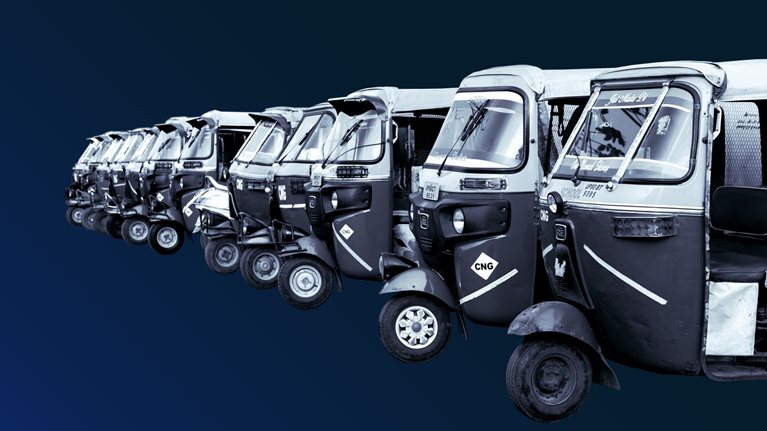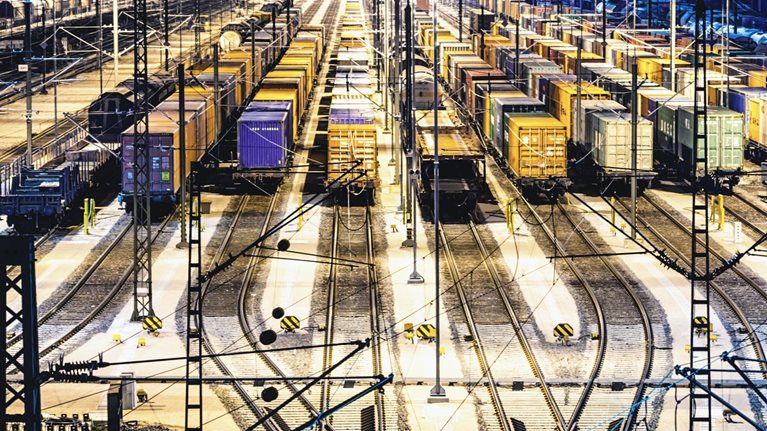COVID-19 is an unprecedented humanitarian challenge for all countries. Six weeks of national lockdown have given India the time to make a concerted effort to flatten the pandemic’s curve. Now attention is shifting to reopening the economy while containing the virus: a conundrum many other nations are also grappling with.
In the past six weeks, India’s economy has functioned at 49 to 57 percent of its full activity level, by our estimates. That economic cost, though unavoidable in the early stages of a lockdown, might not be sustainable in the longer term. It is becoming increasingly clear that COVID-19 will not disappear immediately; the economy will need to be managed alongside persistent infection risks, possibly for a prolonged period. After reopening, some countries have needed to resume lockdowns in response to rising infection rates, and India may be no exception.
How Indian businesses, consumers, and workers are equipped to resume their activities, even amid the ebb and flow of the virus, will decide how lives and livelihoods fare in India. Effective management of lockdowns, along with health-system preparedness1 to manage and contain the virus), will be a critical capability for Indian administrators, since restarting the economy comes with risks. The lockdown- and restart-management capability will have to be granular and dynamic, with local implementation closely aligned to state- and central-government policy and support from high-quality communication.
Implications of lockdown to consider
Looking ahead, three considerations may shape a suitable approach for India.
1. India’s intertwined supply chains need a sharply targeted lockdown approach.
India’s manufacturing, labor, and distribution chains are intertwined across sectors and geographies, particularly in the wake of the Goods and Services Tax that has eased interstate trade and commerce.
As a result, an economic activity allowed in one part of the country or economy could be constrained by supply-and-demand bottlenecks in other parts. Supply chains, demand centers, and labor corridors would need to be restored while the country ensures that lockdowns are sharply targeted in the locations and for the activities required to contain the virus. Those targeted guardrails would need to be adjusted dynamically as the situation evolves over the coming year.
The following examples highlight a few of the dependencies across Indian sectors and geographies:
- In the textiles sector, cotton is bought in the western parts of India, yarn is spun in the north and west, weaving takes place in the south, and apparel is manufactured in clusters in the north and south.
- In the chemical industry, the acetic-acid value-chain supplies diverse industries, such as pharmaceuticals, pesticides, paper, food processing, and construction. Any blockage to its supply chain would therefore have ripple effects in many other seemingly unrelated sectors.
- Electronics manufacturing requires inputs from sectors as diverse as metal working, plastic molding, paper processing, chemical processing, and electrical supplies. Disallowing activity in any of them would affect electronics-manufacturing output.
- Six states (including Andhra Pradesh, Kerala, Maharashtra, and Tamil Nadu, which account for 30 percent of construction activity) rely heavily on migrant construction workers from other states. Bottlenecks in the return of migrants would affect building activity in such states.
- Half of all drivers engaged in freight movement across the country come from just 14 districts, according to our analysis. Restrictions on the movement of people from these districts could affect the ramping up of national logistics activity.
2. Economic activity is concentrated in red-zone districts that are critical centers of production and consumption
The Indian Ministry of Health and Family Welfare (MoHFW) has classified districts into red, orange, and green zones, based on multiple criteria.2 The 130 districts classified as red-zone districts are some of the most urbanized and industrialized parts of the country. They account for some 41 percent of national economic activity, 38 percent of industrial output, 40 percent of nonfarm employment, and more than half of India’s consuming-class households3 (Exhibit 1). Within this set of red-zone districts, 27 districts that have relatively higher infection rates and are more urbanized account for roughly one-third of the economic activity. Finding methods of keeping these red-zone districts operational and safe would be critical in keeping economic activity sustainable.

3. Significant on-the-ground implementation challenges need to be addressed
Under the most recent guidelines from the Indian Ministry of Home Affairs (MHA) on May 1, 2020, almost all activities have been permitted, including in red-zone districts, while specific containment zones within districts are required to stay locked down. State governments are empowered to reopen local district-level economies within the overall central guidelines.
The dominant concerns at the state and local levels are infection and mortality rates, indicators that tragically affect communities and are counted daily or even hourly. Economic consequences of lockdowns, such as job loss and poverty, show up over weeks and months. State governments are naturally considering their healthcare-capacity levels; virus-screening, -tracing, and -containment resources; and ability to enforce safe work protocols on the ground. With these factors coming into play, many red-zone districts could continue to remain fully locked down in the near term, and some others could be locked down again. Based on current announcements, two of India’s largest cities, Mumbai and Pune, representing 6 percent of India’s GDP, will stay locked down until May 17, 2020; the containment zones within them house a fraction of their populations.
Even where districts have reopened, varying interpretations of government guidelines by local frontline administrators could confound the issue. For example, current guidelines stipulate that industries with “access control” can be reopened, but state authorities need to determine what that means—and the interpretation may vary, even among frontline functionaries within a particular state or district. In the dynamic environment anticipated, such guidelines may change frequently as Indians live and work alongside COVID-19 in the coming months, needing an agile implementation capability on the ground.
Potential reopening implications for economic activity and workers
Based on district-level data on employment for more than 700 districts across 19 sectors, we estimate that only 49 to 57 percent of India’s economic activity has operated during the lockdown so far, with 143 million to 186 million inactive nonfarm workers.4 Economic activity on the ground may rise going forward, although reaching full potential would require considerable effort to boost local confidence in large swathes of the country.
We conducted a thought experiment to simulate potential changes in economic activity and work levels under different assumptions. Exhibit 2 shows three potential cases under various implementation levels of the recent MHA and MoHFW guidelines:
- In the moderate-opening case, we assume the recent reopening guidelines from MHA (to allow all districts, except for their containment zones, to operate most activities) are implemented in all but 130 red-zone districts. In those 130 districts, we assume urban areas allow only essential services and rural areas allow manufacturing and construction to resume. In this case, only 66 percent of national economic activity is operational, with around 107 million inactive nonfarm workers.
- In the broad-opening case, we assume that MHA guidelines are implemented in all but 27 red-zone districts (the most urbanized ones that also have relatively high infection rates), which we assume remain locked down and permit only essential services in urban areas. In this case, around 80 percent of national economic activity is operational, and the number of inactive nonfarm workers is around 67 million.
- In the extensive-opening case, we assume that all districts restart permitted activities outside their containment zones, with careful monitoring of health implications. Here, at least 96 percent of economic activity is operational, with 17 million inactive nonfarm workers.

In both the moderate- and broad-opening cases, the lack of adequate work opportunities and a consequent increase in the vulnerable population are significant concerns. Populous states such as Maharashtra, Tamil Nadu, Uttar Pradesh, and West Bengal could each see around five million inactive nonfarm workers, even in the broad-opening case (Exhibit 3). That level of unemployment would pose a considerable burden of providing social safety nets: we estimate that meeting just the most essential needs of those workers and their dependents could cost more than $12 billion per quarter.

Granular, dynamic, and locally driven lockdown- and restart-management capabilities
To enable the economy to reopen sustainably championing the health and safety of citizens, India needs to take into consideration several types of measures:
- Strengthening local health preparedness. To reopen sustainably, health-system preparedness needs to be enhanced across a large number of districts, particularly the red-zone ones.
- Moving from a list of permissible activities to a not-permitted or “negative” list. Short, sharp communication around what is not permitted would be easier to understand and implement than would a list of permissible activities. It would also help avoid the risk of entire sectors or industries being disallowed if they were not mentioned in the permitted list.
- Reinforcing the principle of locking down only the containment zones, not entire districts, in line with MHA guidelines. Administrators, particularly at the district level, are focused on what is being reported daily—disease statistics. Providing a 360-degree view that tracks health impacts across both lives and livelihoods will enable better-informed decision making.
- Increasing implementation capacity at the district level. More than 700 capable and trained officers could be deputed to work with district magistrates in each district to execute locally tailored back-to-work plans. They could receive support from cross-functional centers of excellence in states or a center that channels medical, administrative, social, economic, and business expertise and best practices; conducts rapid analyses; and provides valuable feedback to the districts. This happens in every Indian election.
- Operationalizing safe passage along key labor corridors. Guidelines that restrict the interstate movement of people could be rapidly reviewed. Given the supply-chain linkages, the safe and controlled movement of labor between urban and rural areas, as well as within cities, will be critical if economic activity is to resume.
- Strengthening coordination and communication. Tight coordination among various arms of the government—central departments, states, local administration, and regulators—and with stakeholders from industry and commerce is important. A senior-level state-cum-central government COVID-19 forum that meets weekly could be created to interact frequently, sharing cross-functional learnings. This could help deliver clearer communication to stakeholders at all levels.
- Looking ahead and planning for contingencies. The future remains uncertain, and India will need to be ready for all sorts of eventualities. It would be wise at all levels of government to develop contingency plans based on scenarios of potential COVID-19 impacts.
India’s economy will need to function alongside COVID-19 for a prolonged period. A well-implemented, granular, dynamic, and locally driven lockdown- and restart-management capability while managing health risks is required. There is much at stake for India—in both lives and livelihoods—in getting this right.


